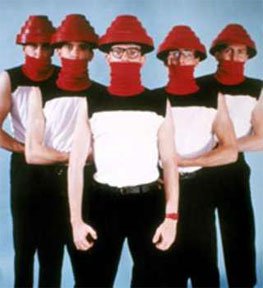
Pearse is a very unfashionable figure these days, indeed for decades past. Although there are plenty of people who would love to claim the banner of Connolly, sometimes by gutting his ideas and sometimes by ascribing to him an ultra-radicalism he didn’t have, Pearse would be nearly forgotten had he not got the station named after him. This reflects, I think, a deep ambivalence towards 1916, such a significant event that it still makes our political establishment uneasy 91 years later, but also in a basic lack of ambivalence in Pearse’s mode of expression. Connolly can be, and has been, reinvented as a Labourite, a Stickie, a Fianna Fáiler, a Provo, even someone close to the esoteric ideology of the Socialist Party, but Pearse is harder to bend to a foreign purpose. Possibly that’s why few people today bother to ask the question, what did Pearse think he was doing?
The great martyr has been particularly badly served by our historical revisionists, who like to write him off as a virtual madman, something you can get away with by throwing around cant terms like “atavism”. Often this is given a theological gloss by reference to mystical ideas of “blood sacrifice”, which shows a basic lack of knowledge of Catholic theology. It’s true that Irish Catholicism, and its colonial offshoot in Scotland, are deeply weird from the standpoint of Vatican orthodoxy, but they still don’t find much of a place for “blood sacrifice”. In any case, the man was not a mad Catholic theocrat in the Maria Duce mould, but basically a Rousseauist political thinker.
What sets Pearse apart, and renders him difficult for a lot of people to understand, is that he was not only a revolutionary but also a poet, a combination that used to be a lot more common than it is these days. Not only that, but he had an intimate knowledge of a Gaelic canon that is unfamiliar to most modern readers, not least because a big chunk of our society believe that having no Irish at all is the mark of a sophisticate. If you’ve even a passing acquaintance with the old literature, and even with my horrible Irish – like the Myles na gCopaleen character, I have no Gaelic only Ulster Gaelic, and not a fierce amount of that – I do my best, then what is obscure becomes clear.
It’s worth remembering the basic transformative element of the aisling genre, a patriotic verse form that Pearse was steeped in, whereby the cailleach (hag) becomes the spéirbhean (goddess or woman of great beauty). This is a very old theme in folklore, and a sanitised version appears in European fairy tales in which a girl kisses a frog, whereupon it magically transforms into a handsome prince. In the old Irish versions, not only are the gender roles reversed, but, as Nuala Ní Dhomhnaill is fond of reminding us, the hero doesn’t get away with just demure kissing – no, he has to sleep with the hag. Damn, those old Gaels were a racy bunch. The aisling poems of later centuries tend to be more elevated in tone than the Old Irish texts, as befits their identification of the cailleach-spéirbhean transformation with the cause of national rebirth, but nonetheless they build on the original.
Let us then turn to Pearse’s most famous poem:
Mise Éire:
Sine mé ná an Chailleach Bhéarra.
Mór mo ghlóir:
Mé a rug Cú Chulainn cróga.
Mór mo náire:
Mo chlann féin a dhíol a máthair.
Mór mo phian:
Bithnaimhde do mo shíorchiapadh.
Mór mo bhrón:
D’éag an dream inar chuireas dóchas.
Mise Éire:
Uaigní mé ná an Chailleach Bhéarra.
Incidentally, Bernie McAliskey does a great recitation of “Mise Éire”, though she may prefer to sing some Leonard Cohen, as she did last time I was at a meeting with her. But to return to the point, what is Pearse saying here? It’s well known that he is lamenting the state of the nation, but what’s crucial here is the aisling convention – having identified Ireland with the Hag of Béarra, as night follows day, the cailleach must inevitably become the spéirbhean. But to accomplish that, one needs a heroic intervention.
So, in place of the blood sacrifice, do we then have 1916 as a symbolic act of sexual intercourse? That may strike the literalist reader as weirder still. But we are talking about allegory layered upon allegory: the sex is not sex, but symbolic of the self-sacrifice of the hero. Semiology, how are you. It’s a particularly difficult point for those whose cultural background is basically written rather than oral, as evidenced by the Austrian policemen in 1914 who laughed when the Sarajevo assassins described themselves as junaci (heroes). Had the Austrians known the nuanced meaning of junak in Serbian patriotic poetry, where the term equates pretty well to our fian, the assassins’ self-description might not have sounded so, well, incongruous.
Incongruous, of course, is how it appears to our soi-disant rationalists, who find it bizarre that anyone, outside of the wilder reaches of Islamic fundamentalism, could be inspired to drastic political action by poetic imagery. The power of the poetic archetype as a way of describing our current situation and pointing towards the future passes by those who see the flip soundbite as the mark of the great communicator. But this just goes to show that there are more things in heaven and earth than are dreamed of in the logical positivist mind.









